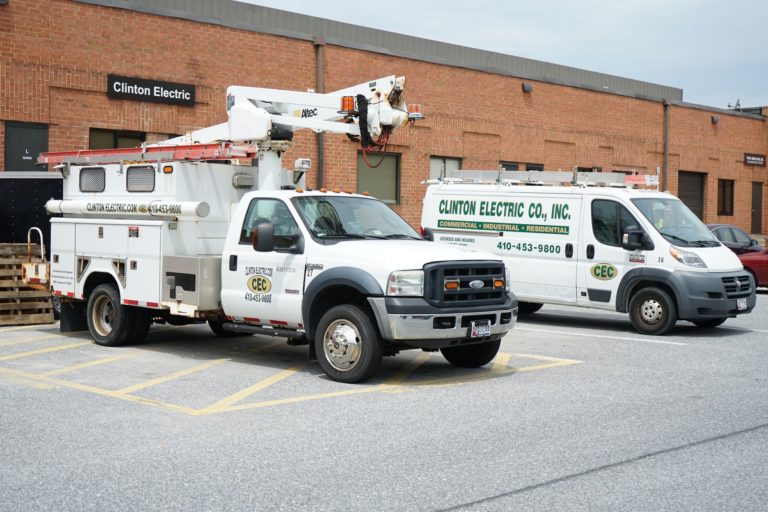For every customer who walks away, you need to find and convert three new ones to fill the gap.
That’s a lot of extra work and cost. And this is where understanding the meaning of customer retention rate becomes crucial.
Customer retention is about encouraging your existing customers to use your business again. Instead of dedicating all your time and marketing resources to attracting new customers, you split your efforts and focus on retaining customers, too.
In this article, we’ll look at the meaning of customer retention and why it’s so important for your business.
We’ll also show you how to measure your success in retaining customers and share practical tips on how to get even better at it.
Whether you’re in HVAC, plumbing, or electrical, these insights can help you build a stronger, more loyal customer base.
What Is the Meaning of Customer Retention?
Customer retention means keeping your customers returning to your business instead of going elsewhere.
For example, if a customer calls you every summer to inspect their air conditioner, you’ve retained them as a customer. They are loyal to your business.
This customer has chosen you over your competitors more than once. This is the behavior you want to encourage. You want the customer to be happy enough with your service to trust you with the next one.
In the opposite direction, there’s another important term related to customer retention —”churn rate.” Your churn rate tells you how many customers your business loses over a certain period.
For almost every business—whether you serve other businesses (B2B) or homeowners (B2C)—keeping your retention rate high and your churn rate low is essential for your business to thrive.

Why Is Customer Retention Important?
Keeping your customers loyal impacts your long-term success. In the short term, customer retention provides you with consistent revenue, saves time and money, and positions you as a trusted authority in your industry.
According to McKinsey & Company, ”…80 percent of the value creation achieved by the world’s most successful growth companies comes from their core business—principally, unlocking new revenues from existing customers.”
RELATED ARTICLE: Why Marketing to Existing Customers Boosts Revenue for Plumbing, HVAC, and Electrical Companies
So, why is customer retention so powerful? Here’s what it can help you achieve:
Cost Savings
As a business owner, you know bringing in new customers is vital to growing your business. But did you know that attracting new customers costs anywhere from five to 25 times as much as keeping the ones you have, depending on the industry?
If you put in the effort to keep your customers happy, they will keep coming back. This means you spend less money trying to find new customers.
Repeat Business
Satisfied customers will use the same service repeatedly. Why would they go through the stress of finding a new service provider if the one they have has consistently met expectations?
This consistency is good for your business because it means more sales without much extra effort.
More Upsells
It’s easier to sell new things to customers who already like your service. They trust you, so they’re more likely to buy something else you offer.
If they use your service regularly, offers like bundling and prescheduling can feel like something exclusive to them. It also represents a steady business stream to you.
Quality Referrals
Customer retention is not just about a single sale. It’s about building a relationship.
Satisfied customers tell their friends. This word-of-mouth marketing can bring you new customers without you having to do anything.
This is especially true for home services businesses. Your goal is to be the first one they think of when they need help again.
FROM ONE OF OUR PARTNERS: 5 Ways to Attract More Customers Through Your Company’s Website
Measuring Customer Retention Rates
To see how well you’re holding on to your customers, check your customer retention rate using a standard equation. Collect the information over a set period, such as per month or year.
Here’s how you do it:
- Calculate how many customers you had at the start of your set period, represented here by “S.”
- Determine how many new customers came in over the same amount of time. We’ll call this “N.”
- Finally, re-calculate all your customers again. This is “E.”
- Then, use this formula: CRR = ((E-N)/S) x 100
Your answer is the percentage of customers that stuck with you.
Here’s how it looks in practice:
- You start your set period with 100 customers (S).
- You gain 20 new ones (N), so now you have 120.
- But at the end of the period, you count and have 115 (E).
- You do the math: ((115-20)/100) x 100 = 95.
- Your retention rate is 95%.
Not perfect, but not terrible.
Retention is key, but it’s not the whole story behind customer relationships. To really understand your customers and how they feel about your services, factor in the metrics below, too.
Customer Lifetime Value (CLV)
CLV tells you how much a customer is worth over time. The higher the number, the better.
To find it, look at how much they spend, how often they buy, and how long they stay your customer. To make it easier, use an online CLV calculator.
Your results show you how valuable each customer is.
RELATED ARTICLE: 5 Quick Tips to Help Home Services Providers Get Repeat Customers
Net Promoter Score (NPS)
NPS measures how likely your customers are to recommend you to others. You ask them to rate your business or service from 0 to 10.
Based on their answers, they’re either:
- Promoters (9-10): They love you and will tell others.
- Passives (7-8): They’re okay with you but could leave.
- Detractors (0-6): They’re unhappy and might even speak badly about your services.
This score helps you see how many of your customers are true fans.
Repeat Purchase Rate
Your repeat purchase rate shows the percentage of customers who buy from you more than once. It helps you make incremental adjustments to your strategies, whereas your customer retention rate informs long-term decisions.
A high repeat purchase rate means many customers are coming back, which is great for your business.

How You Can Start Improving Your Retention Rates Right Now
You can see how your customer retention rates are a major indicator of business health. Here are some simple and practical steps you can take right after reading this article to boost them:
FROM ONE OF OUR PARTNERS: 5 Customer Retention Tactics to Try
1. Offer Speedy Support.
When customers have a problem, they want help fast. Ensure your support team quickly responds across any platforms you use to interact with customers. Platforms might include email, social media, or SMS messaging.
Use tools like live chat on your website to answer questions in real-time. Some customer relationship management (CRM) software systems offer AI-based chat options that can answer basic support questions, leaving more abstract responses to your team.
2. Personalize Customer Interactions.
People like feeling special. Use their names and remember the last service they bought from you when you communicate with them. Follow up on their last service and see if any issues have developed or remind them of upcoming service schedules.
You can also make this easier and more automatic by using CRM software.
3. Invest in Your Employees.
Happy employees make happy customers, so train your team well. Make sure they know how important good service is and how to communicate respectfully with customers.
When your team feels good about their work, they pass that on to your customers.
4. Collect and Use Customer Feedback.
Always ask your customers what they think. You can use surveys or feedback forms.
Once you’ve collected it, have a plan to put customer feedback into action. See how it applies to the services you offer and overall customer experience. And don’t forget to thank customers for their responses.
Asking for feedback shows you care about customers’ opinions. Plus, it gives you ideas on how to improve.
5. Encourage Loyalty.
List a few ideas that you can use to offer rewards to loyal customers. Rewards could be discounts on future services, custom maintenance packages, or special offers.
Loyalty programs can be an incredibly effective strategy. Top loyalty programs can increase revenue by 15 to 25% each year.
6. Keep Your Services Top of Mind.
Don’t stop marketing to customers just because they’ve bought something once. Keep reminding them about your services.
Use email newsletters, social media contests, and valuable content like blogs or videos. Regular interactions keep your brand in their thoughts when they need their next service.


